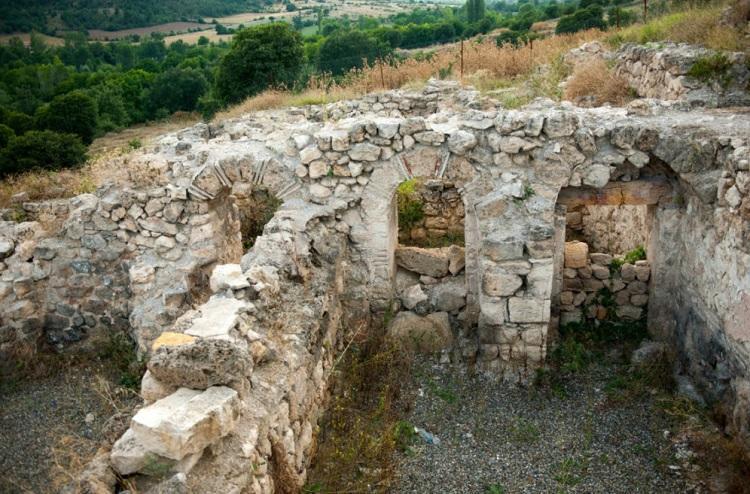‘Zeugma of the Black Sea’ is 5,500 years old, findings show
KARABÜK

The history of the ancient city of Hadrianopolis in the Black Sea region dates back to 3,500 BC, according to the findings of the excavations that have been carried out in the last five years.
Located three kilometers east of Turkey’s province of Karabük, the site is also called “Zeugma of the Black Sea” due to its similarity with Zeugma mosaics in the country’s southeastern province of Gaziantep.
Hadrianapolis had settlements in the late Hellenistic, Roman and early Byzantine periods.
Archaeological surface surveys have uncovered 14 public buildings and other structures in the ancient city so far.
Among these public buildings are two baths, two churches, a defense structure, rock tombs, a theater, an arched and domed structure, a monumental cultic niche, walls, a villa, other monumental buildings, and some religious buildings.
The church floors are decorated with mosaics and have images of the rivers of Geon, Phison, Tigris and Euphrates imprinted on them, which are mentioned in the Bible.
An early Roman period structure was also unearthed under the “Church C” structure, which was excavated in 2017 and is still ongoing.
With the emergence of another structure under the church, it was determined that the foundation of the ancient city was even older than the 1st century BC and dates back to 3,500 BC.
“The publications so far said that the first founding phase of Hadrianopolis was 2,100 years ago, dating back to the first century B.C., corresponding to the late Hellenistic period,” said Ersin Çelikbaş, an academic at Karabük University’s Archaeology Department.
“This year’s excavations have shown us that settlement in the city began in the late Chalcolithic period, which points to about 5,500 years ago. We added 3,500 years of history to Hadrianopolis,” Çelikbaş added.
Besides, various animals, such as horses, bulls, elephants, panthers, deer, and peacocks, are also depicted in the mosaics of the ancient city, which bear resemblance with the ancient city of Zeugma.
Skeletons in a rock tomb, coins from the ancient period, a bone clasp and a unguentarium (tear bottle), a tomb from the 2nd century, and an 1,800-year-old votive plaque have also been unearthed during the excavations in the ancient city.
Noting that one of the most significant areas in Hadrianopolis is the southern Necropolis, which consisted of rock tombs, Çelikbaş said that the necropolis was extensively used in the second century AD, then in the fourth century, and finally in the sixth century.
He also pointed out that the city once hosted a population of nearly 5,000.
Excavation works in Hadrianapolis started in 2003 and have been continuing with intervals.
















